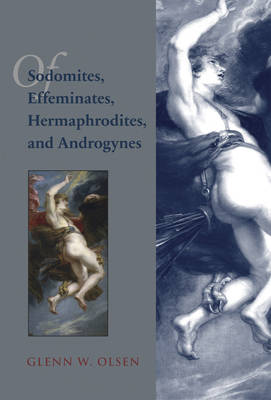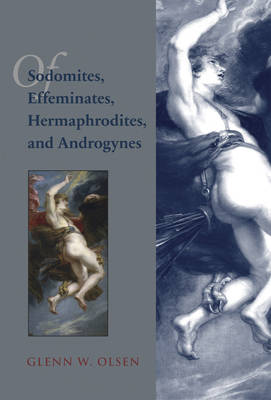
Door een staking bij bpost kan je online bestelling op dit moment iets langer onderweg zijn dan voorzien. Dringend iets nodig? Onze winkels ontvangen jou met open armen!
- Afhalen na 1 uur in een winkel met voorraad
- Gratis thuislevering in België vanaf € 30
- Ruim aanbod met 7 miljoen producten
Door een staking bij bpost kan je online bestelling op dit moment iets langer onderweg zijn dan voorzien. Dringend iets nodig? Onze winkels ontvangen jou met open armen!
- Afhalen na 1 uur in een winkel met voorraad
- Gratis thuislevering in België vanaf € 30
- Ruim aanbod met 7 miljoen producten
Zoeken
Of Sodomites, Effeminates, Hermaphrodites, and Androgynes
Sodomy in the Age of Peter Damian
Glenn W Olsen
€ 129,95
+ 259 punten
Omschrijving
This book examines the history of sex and gender from a linguistic, artistic, and philosophical perspective, providing a new paradigm with which to analyze this controversial subject. Glenn Olsen's wide-ranging scholarship and his attention to primary sources and contemporary interpretations are enhanced by the inclusion of numerous illustrations of Romanesque sculpture. Part one takes the reader on a journey from the ancient world through the early middle ages, examining literature, art, and sculpture in order to capture the 'sexual imagination' of the period. Olsen emphasizes that all centuries had a varied language of sex, focusing on the means by which 'sex' was put into words, especially in penitentials and canon law. He shows there was no single understanding of gender and power relationships, arguing that the story of gender should encompass more than the history of power. Part two turns to Peter Damian, especially his Epistle 31, the so-called Book of Gomorrah. Olsen explores the themes of nature, sin, demonic incitement, lust, free will, and effeminacy, as well as the question of whether Damian represented the onset of the 'persecuting society.'
Specificaties
Betrokkenen
- Auteur(s):
- Uitgeverij:
Inhoud
- Aantal bladzijden:
- 523
- Taal:
- Engels
- Reeks:
- Reeksnummer:
- nr. 176
Eigenschappen
- Productcode (EAN):
- 9780888441768
- Verschijningsdatum:
- 1/10/2011
- Uitvoering:
- Hardcover
- Formaat:
- Ongenaaid / garenloos gebonden
- Afmetingen:
- 163 mm x 234 mm
- Gewicht:
- 997 g

Alleen bij Standaard Boekhandel
+ 259 punten op je klantenkaart van Standaard Boekhandel
Beoordelingen
We publiceren alleen reviews die voldoen aan de voorwaarden voor reviews. Bekijk onze voorwaarden voor reviews.











